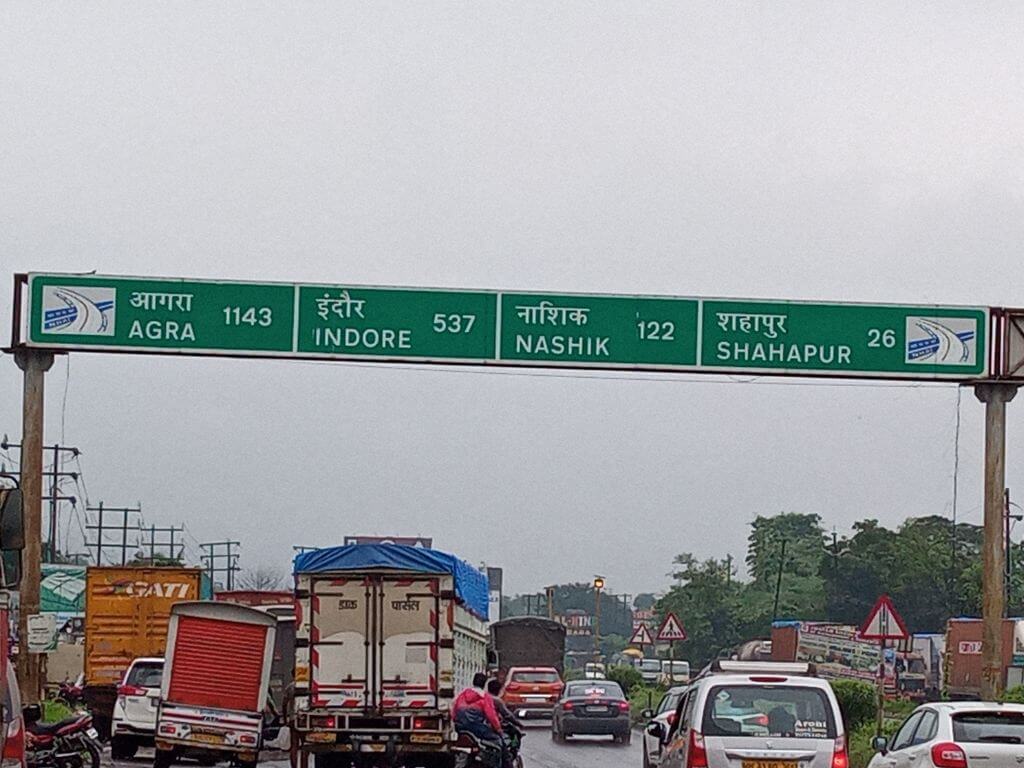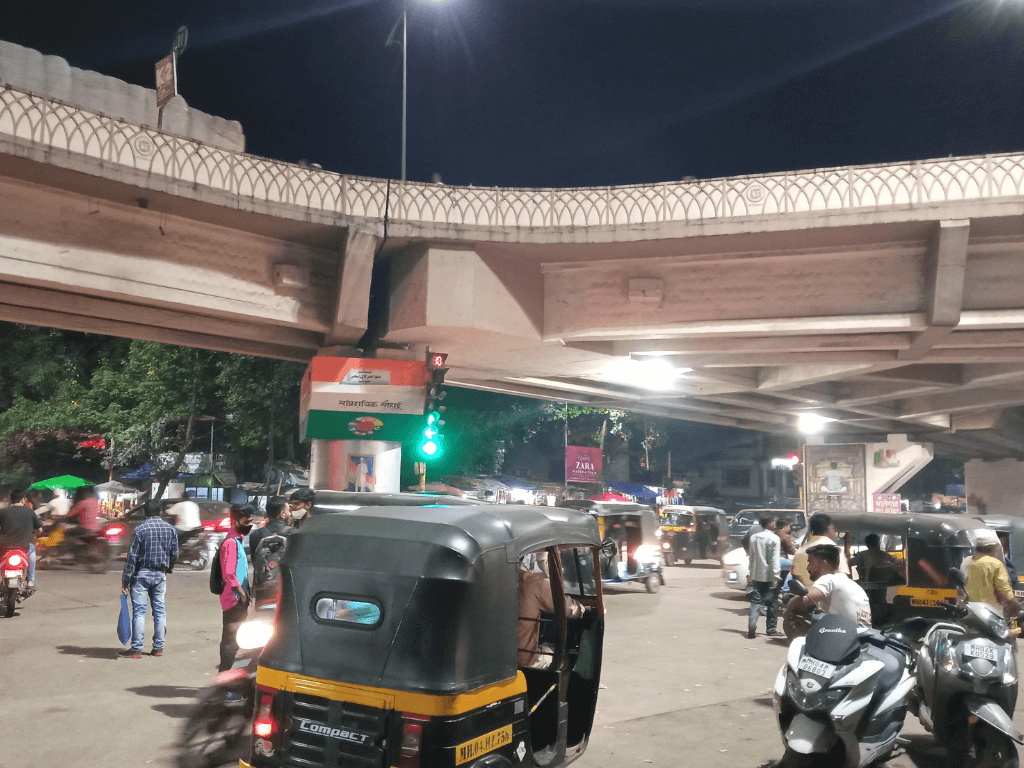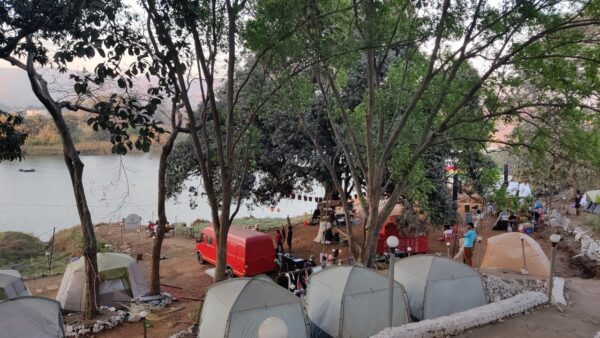To the north-east of India’s financial capital Mumbai lies India’s newly emerging warehousing capital — Bhiwandi. Covering an area of 96 square kilometres, this Mumbai Metropolitan Region (MMR) city, situated on the periphery of Mumbai and Thane, is home to the warehouses of major e-commerce players like Amazon, BMW, Flipkart and Samsung among others dealing in packaged goods. This rapidly growing manufacturing town is where almost half (49 per cent) of its one million population live in slums and informal settlements. Bhiwandi is also one of the latest municipalities to be digitalised.
The expansion of urbanisation from urban areas to their outskirts or peripheries has shaped them into peri-urban borders that deftly move between being both urban and rural. Urban peripheries grapple with the problems of migrant labour camps, slum resettlement schemes and industrial zones and are centres of agrarian and environmental distress due to the lack of planning in their development.
The problems of their urbanisation, haphazard and often ignored, have compounded in the era of digitalisation. Digitalisation deepened the disparities that existed, in contrast to the rapid economic growth. The focus of digitalisation tends to be on the top-tier cities and the peripheral cities or towns often get left out of the debate.
This prompted three scholars to study the digital in the urban periphery. Professor Ayona Datta, from University College London, principal investigator in the project; Professor Abdul Shaban, from the School of Development Studies, Tata Institute of Social Sciences (TISS), co-investigator in the project; and Dr Sheema Fatima, post-doctoral research assistant, began focusing on Bhiwandi in April last year to specifically study ‘Digitising the Periphery’.
The project funded by the British Academy is a study on how cities like Bhiwandi are being transformed by Information and Communication Technologies (ICT) and digital infrastructures, and how these are in turn transforming marginal citizens’ bargaining power and relationships with the Indian state. The project, as their website explains, aims to “examine how inequalities emerge across digital-territorial interfaces, and explore how to make these new inequalities visible and relevant to policy and planning for extended urbanisation”.
Dr Sheema Fatima spoke to Question of Cities about the work that they have done so far and how the lives of Bhiwandi’s residents are impacted by the municipality’s digitalisation.

Why did the team choose Bhiwandi?
Bhiwandi is a historical city, also called the ‘Manchester of India’, known for its power looms, it is part of the Mumbai Metropolitan Region (MMR). There is a lot of talk about Thane and Kalyan, also cities in the MMR, but much remains to be studied and written about Bhiwandi.
What were your impressions of Bhiwandi, how did people respond to your work?
I visited Bhiwandi every week, sometimes more than once. The trip to Bhiwandi is interesting — it gives you a sense of infrastructure quality, access and connectivity to the other urban centres of MMR beyond Mumbai. One has to largely depend on private vehicles for easy access. The lack of public transport leaves much to be desired. People were very welcoming. Bhiwandi has a very rich history of academic institutions. It has some of the oldest Urdu- and English-medium schools and colleges for girls that date back to the pre-independence era. This facilitated our smooth entry and interactions. People there found it intriguing that there is some research being done on Bhiwandi, because no major research or academic work has been done on such a large scale.
How does digitalisation reflect in the lives of people?
Today, governance practices are increasingly being streamlined through online mode. Whether it is school or college admissions, getting registered for COVID-19 vaccine, paying bills – it has all gone online. It is our lived reality, but definitely it is staggered in the city due to connectivity issues and network problems. More importantly, Bhiwandi is a city of labourers and migrants who belong to lower socio-economic groups. Their access and proficiency in using digital interfaces are limited. So, like many other second- and third-tier cities, it depends on private set-ups that do it for them at a price.
We cannot even begin to assess the full impact of digitalisation because it is not available to everybody. The lack of readily available digital infrastructure impedes people’s easy access to technology. Depending on private set-ups that are not exactly affordable to them also limits their access. Technology is not on the tap of their fingers or in their android phones. If the local bodies say that people are filing their taxes online, it is not clear if they are doing it with the help of an agent. Everything is happening online but we lack the infrastructure for it. One computer in a ward office cannot mean that we can claim to be online. Even that one computer needs an operator, it needs a printer and a scanner to run smoothly. There has to be electricity and internet connection for it. We are still paying Rs five a page for a print-out; it is neither affordable nor accessible. We also need better network quality and continuous electricity for our digital resources to function smoothly.
Did digitalisation make certain aspects of living easier for people?
As a society we have varied socio-economic groups and their lived realities vary. But on the bright side, for a lot of women in Bhiwandi, digital mediums opened up avenues for monetising their skills during COVID-19, they were able to contribute to family income. Many of them were selling cakes, art works, stitching and even cooking full course meals from home. For parents whose children went to schools and colleges, online classes were convenient because they were not worried about having to drop and pick their girls from school. On the other hand, educational institutions are the only safe spaces for these young women and girls to socialise, make friendships and develop solidarity with their counterparts. Our cities lack welcoming and safe public spaces for women. Online classes forced them to be at home.

Photo: Sheema Fatima
How is the digitalisation of Bhiwandi different from Mumbai?
Mumbai is a mega-city. It is the commercial capital of India. The urban local bodies and other government departments have better infrastructural and human capacity support and funds in comparison to Bhiwandi. The Brihanmumbai Municipal Corporation has a larger budget for everything. Not all departments in the Bhiwandi municipality have adequate infrastructure. For example, the land records department does not have an in-house scanner to map large scale maps. How do you do it? People have to outsource it from a private firm, making it unaffordable to many. However, most conversations or examples on digitalisation come from larger cities. Increasingly, the urbanisation process is becoming more precarious. We should look at peri-urban areas to see what they are struggling with. We need to pay attention to it. The 74th Amendment calls for decentralisation of governance. This has manifested differently in cities. People don’t know about digitalisation; we are still used to imagining the authorities as babus and there’s a whole different angle. For example, how does a woman in small town Kasba in Bihar even imagine this? If she wants to sell her land and goes to the local office, they tell her that the server is down. She cannot imagine this – Kaun hai server? Koi aadmi hai, saheb hai, office hai? (Who is the server? Is it a man, an officer or an office?) I have worked for five-six years in urban and peri-urban areas of Bihar, Bhiwandi is like that too.
What does your study hope to achieve?
We hope to develop a policy tool kit that can be used to intervene in different aspects of digitalisation in cities — for people, in governance, and their interaction with technology. People need to know how to get the information they need. They should be able to say that ‘this is what should be done’ in a given situation. We are talking to different stakeholders of the city over a long timeline to be able to do justice to the city.
Is digitalisation seen in ecology in any way in a city like Bhiwandi?
The periphery definitely bypasses a lot in terms of regulations at every front, including environmental norms. Our project does not look at the question of pollution directly but there may be scope to do that. Moreover, the e-commerce business, in a way, is a less polluting sector. Warehouses are not manufacturing anything.
In your study you found that fewer women used their phones for leisure while access wasn’t a problem for their male siblings. How would you interpret this?
It is prevalent in our society and even in a metropolitan city like Mumbai. We like to believe that while a girl can easily get spoiled or influenced by the trappings of the digital world, a boy is bereft of any such worries. Of course, that is not true. In fact, I think since the male members know the trappings of the online world and they are part of it, they simply like to keep their sisters, mothers and wives from it. But they do not hesitate to indulge in it. And this activity will involve someone else’s sisters, mothers and wife. The day they understand this, it will stop.
What concerns should we have about digitalisation?
Privacy and data ethics. We need to worry in a world where we are the data. We are not just buying the product. We need to ask questions about where our data is being used and who is encashing it. These are the fundamentals. Also, surveillance is a major concern. Nobody would not be comfortable being surveilled. No matter where you are, you need to worry about it. Everybody knows that they are being surveilled. Information can become misinformation in no time. The digital world speeds this process up. Bhiwandi is on the international map because it is a warehousing hub of India. That’s what makes the city interesting. A large population in Bhiwandi are young men and women employed in warehousing who earn good money in a short period. They invest in smartphones. This section needs to be made more aware of the trappings of the digital world.
Jashvitha Dhagey developed a deep interest in the way cities function, watching Mumbai at work. She holds a post-graduate diploma in Social Communications Media from Sophia Polytechnic. She loves to watch and chronicle the multiple interactions between people, between people and power, and society and media.
Cover photo: Sheema Fatima




